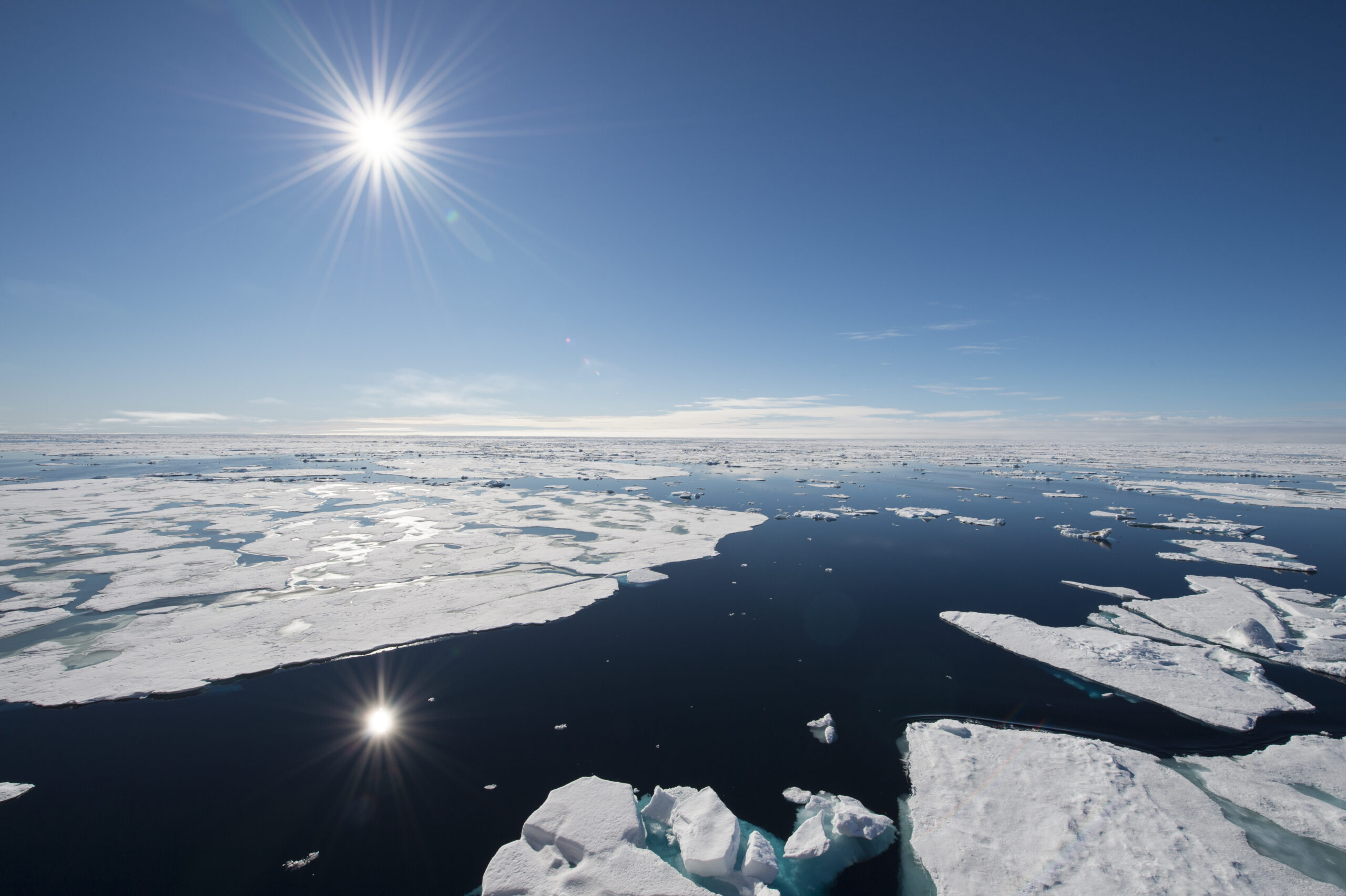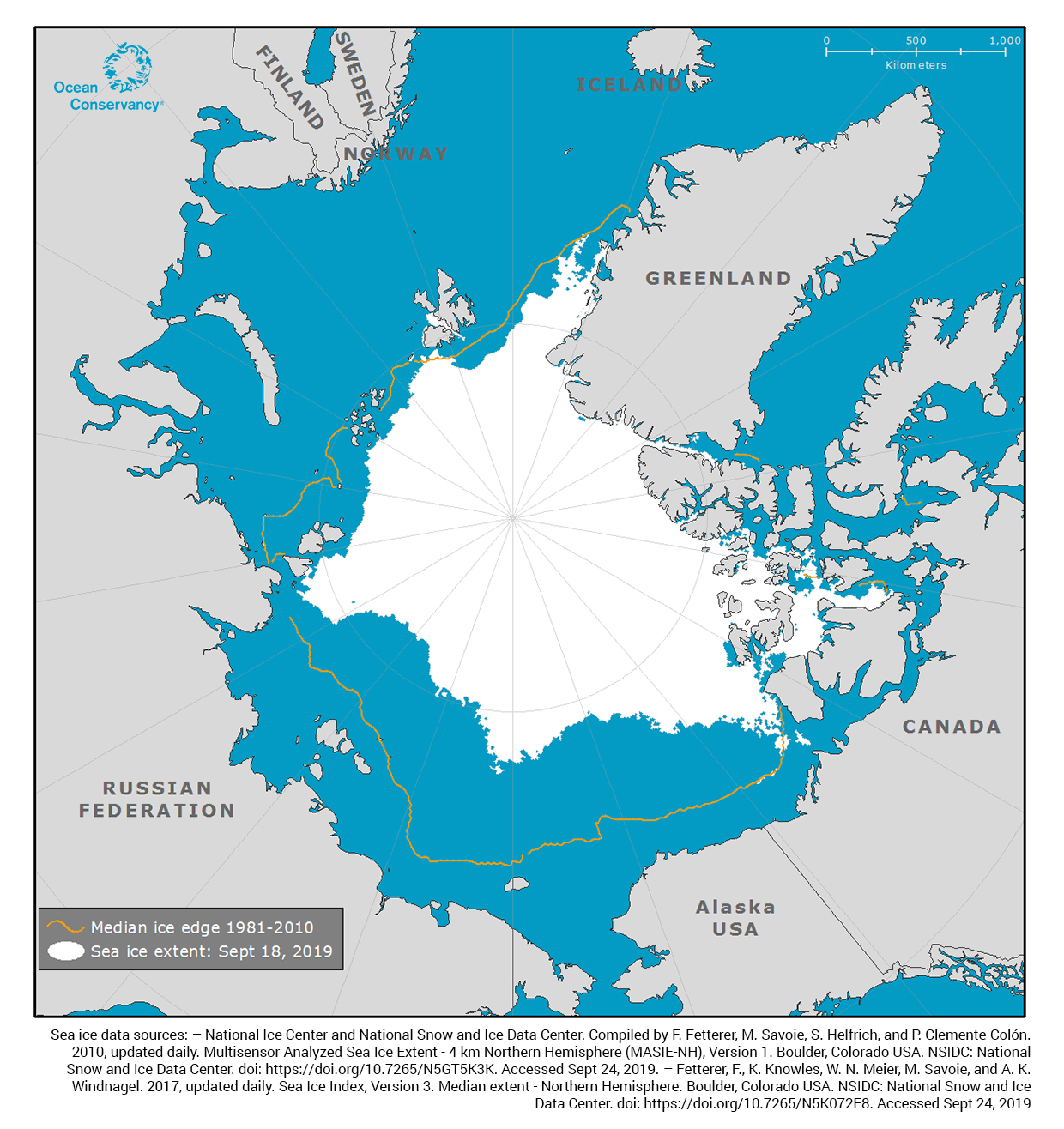We’ve Reached this Year’s Arctic Sea Ice Minimum
What low sea ice minimums mean for the Arctic—and the world

For many people, September means the kids are back in school, football season is underway, and the end of summer has come. For Arctic scientists, it is also the time of year that sea ice in the northern hemisphere reaches its minimum extent.
This year, scientists announced Arctic sea ice reached its minimum on September 18, when ice covered just 4.15 million square kilometers. Thanks to a slower decline in sea ice extent in the later part of the summer, the Arctic did not end up breaking the all-time record this year. Although the sea ice minimum was not lower than in the 3.4 million square kilometers that remained in 2012, it was the second lowest sea ice cover on record. But trust me, this is not a competition we want to win.

In case you missed it, the sea ice minimum is the point of the year at which the Arctic has the least amount of ice. It typically occurs in September, after many months of warmer temperatures during the Northern Hemisphere’s summer. Although an annual cycle of melting and freezing is natural, climate change has produced a downward trend in the amount of sea ice that’s left in the Arctic at the end of every summer. According to the National Snow and Ice Data Center, “[t]he 13 lowest extents in the satellite era have all occurred in the last 13 years.” This downward trend in sea ice extent has major implications for our ocean and climate, and causes big challenges for the animals that rely on sea ice to live and hunt.
Decreasing sea ice extent affects every aspect of the Arctic. Wildlife like polar bears and walruses, which rely on the ice to hunt and breed, lose important habitat. Without sea ice to serve as a buffer against fall storms, wind and waves batter and erode Arctic coastlines, destroying infrastructure and threatening residents of coastal villages. And melting ice facilitates increased vessel traffic in the Arctic region, which puts the vulnerable marine ecosystem at greater risk for accidents and disturbance.
And (forgive us) some more bad news: Not only is the minimum extent of Arctic sea ice low, average sea ice thickness is less than half what it was this time of year 40 years ago, making the remaining ice that much more vulnerable to future loss.
Beyond sea ice loss, fires have raged through the Alaskan and the Siberian north country, destroying landscapes and releasing more carbon into the atmosphere. Permafrost continues to thaw, releasing more greenhouse gas into the atmosphere. Combined, these factors continue to add strain to an already stressed Arctic system.
What does this mean? The Arctic is warming twice as fast as the rest of the world. On Wednesday, the Intergovernmental Panel on Climate Change released its Special Report on the Ocean and Cryosphere in a Changing Climate, which analyzed the latest ocean and climate science to further reinforce how climate change is driving these rapid changes we’re seeing in the Arctic and sea ice. Lower and lower Arctic sea ice minimums are critical yearly reminders that we need to reduce carbon emissions worldwide to slow climate change. We also need to remain dedicated to mitigating impacts from other threats, like offshore oil drilling and increased shipping, that could further damage the Arctic ecosystem.
Sea ice is the foundation of the Arctic Ocean. It’s up to us to take action to ensure it sticks around, summer after summer.